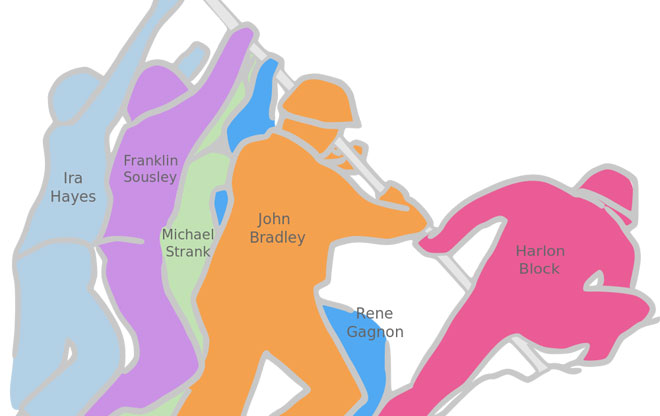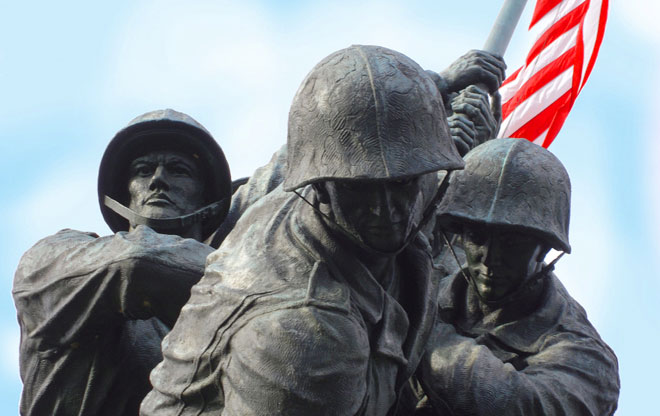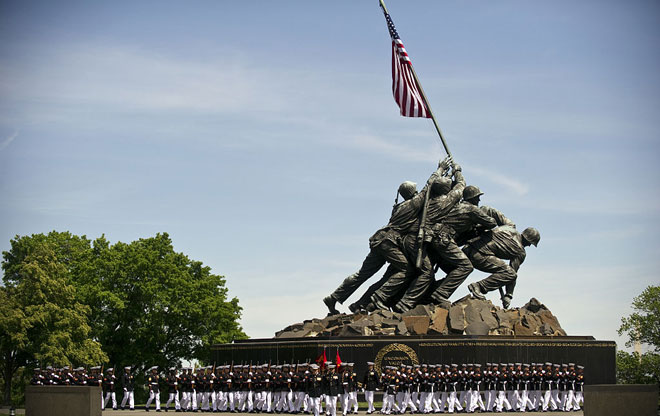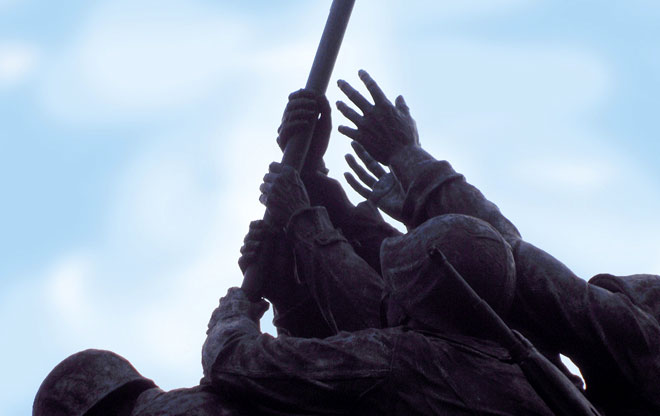
A Cross Section of America
The moving memorial features the marines and sailor who raised the second flag over Iwo Jima: Sgt Michael Strank, Cpl Harlon Block, PFC Franklin Sousley, PFC Rene Gagnon, PFC Ira Hayes, PM2 John Bradley. The six flag-raisers represented a cross-section of America: Hayes, a full-blooded Pima Indian from Arizona; Strank, a Pennsylvania coal mine worker; Block, a draftee from the Texas oil fields; Sousley, a 19 year old Kentucky farm boy; Gagnon, a New Englander rejected by the Navy; Bradley, a funeral director’s apprentice.
Image: Wikimedia
Connected and Personal
It is hard to imagine that something so large in scale can feel so connected and personal. The 32-foot tall figures within the statue erect a 60-foot bronze flagpole from which a cloth flag flies all day, every day. This is one of the few official sites where this is required. President John F. Kennedy issued a proclamation that a flag of the United States should fly from the memorial 24 hours a day.
Image: Dena Kennett
Precision Drill Exhibition
During the summer, Marines perform their famous Sunset Parade in front of the memorial every Tuesday at 1900. There is a shady grandstand surrounded by large, mature trees for viewers to sit and enjoy the parade. The parade features a precision drill exhibition by the Marine Corps Silent Drill Platoon and a “Music-In-Motion” performance by the Marine Drum and Bugle Corps.
Image: Wikimedia
12, Not 13 Hands
There is a persistent urban myth that de Weldon added a thirteenth hand to the sculpture to symbolize either all the other Marines who made the flag raising possible, or the hand of God. When informed of the rumor, de Weldon exclaimed, “Thirteen hands. Who needed 13 hands? Twelve were enough.” There is even a booklet debunking the myth by Gunnery Sergeant Tom Miller, who spent 5 days on Iwo Jima.
Image: Dena Kennett